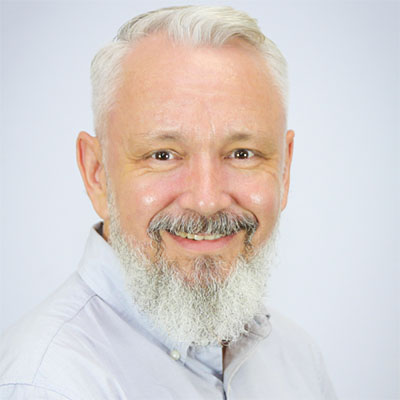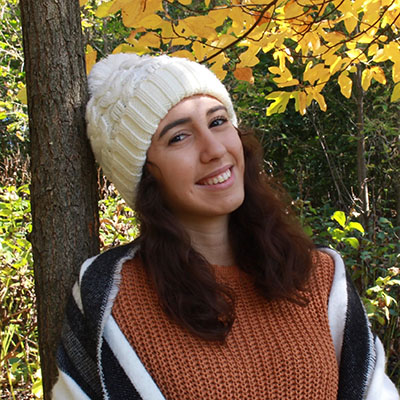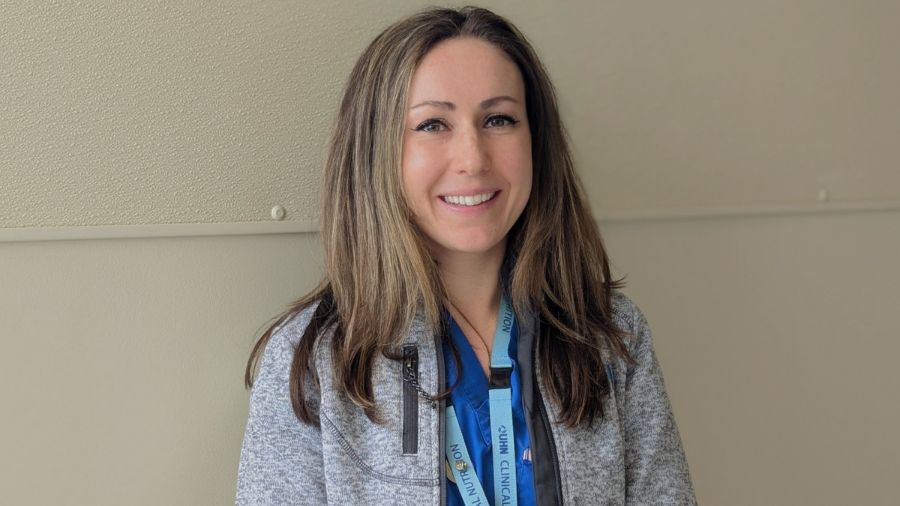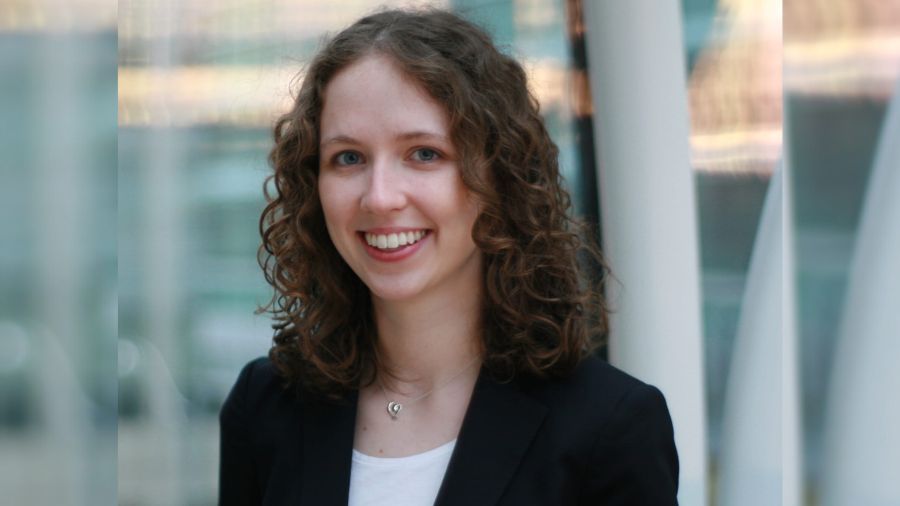Veronica Deally, sourcing specialist, University Health Network People & Culture, with her son, Dylan. Veronica says one of the reasons she joined UHN’s Accessibility Advisory Council was to advocate for different perspectives and understandings, especially for patients with developmental disabilities. (Photo: Courtesy Veronica Deally)
What happens when you bring together a group of professionals, each dedicated to promoting an equitable and inclusive environment for patients, families and staff? The answer is real change.
UHN’s Accessibility Advisory Council (AAC), which includes members of TeamUHN, along with UHN Patient Partners, has been focused on promoting an accessible environment that is welcoming to everyone, regardless of ability.
To celebrate National AccessAbility Week, three members of the AAC get candid about why they joined the council and which projects they’ve found most meaningful.
Veronica Deally, sourcing specialist, UHN People & Culture
I joined the AAC because …
I wanted to advocate for different perspectives and understandings, especially for patients with developmental disabilities. I also joined to be a voice for my six-year-old son, Dylan, who was diagnosed with autism spectrum disorder – a developmental disability that can cause deficiencies in the areas of communication, behaviour, and social skills – and who, until recently, was non-verbal.
There is a saying that “once you’ve met a person with autism, you’ve met one person with autism,” because it looks so different for everyone on the spectrum. We can make so many assumptions about someone who may come into our hospitals seemingly disoriented, not communicating well, or behaving awkwardly, when, in reality, there are so many conditions that can cause these reactions.
It’s our duty as health care professionals to not assume anything and to offer our patients the health care they need, using the right methods of communication, with patience and understanding.
One project I’m proud to be part of is …
Security Guard training to raise awareness and understanding that communication is key to defusing anxiety, responsive behaviours and de-escalation in all instances, including those involving individuals with disabilities. In this training, members of the AAC present our lived experience and point of view to these important members of TeamUHN.
When I start my training, I paint a picture of an individual coming to our Emergency Department with autism spectrum disorder, which is often “invisible.” They can’t communicate verbally; have sensory issues that make them sensitive to light, sound, and touch; and they fear hospital settings. This scenario can lead to emotional dysregulation, resulting in them acting out, staff getting frightened, and calling a Code White (violent person).
By training Security staff on what to look for and giving them the tools to react, we open their eyes to the individual – and not just their behaviour – and set them up for successful interactions with patients. I often joke that Security Guards have two jobs: to serve and protect, and to act as social workers. They have to make quick calls and react fast, but also need to be conscious of mental health issues, disabilities, and disorders.
I believe the AAC has the potential to …
make real changes for real issues. By digging deep with our UHN Patient Partners and committee members, we explore ideas for changes in infrastructure and accessibility, and advocate for those who might not have a way to share their challenges.
We hope to give everyone a voice and make changes that will not only benefit our hospitals, patients, and families, but the community as a whole. When a person visits UHN, we want them to know we are a place that cares about everyone’s needs and they will be treated with equity and compassion.
Tim Tripp, Director, UHN Library & Information

I joined the AAC because …
I was recruited for being a squeaky wheel! When I started my role, UHN was just rolling out Caring Safely. Safety huddles were all the rage, and although we’re not a clinical department, the concept resonated with me. We decided to implement weekly huddles and I was surprised at how many safety concerns we were able to surface.
One recurring issue was related to the accessible washrooms near the Toronto General Health Sciences Library. The washrooms didn’t have door openers. This was not only a problem for staff with mobility issues, but also for patients and visitors.
I reached out to Jacqueline Silvera, Senior Manager, Diversity & Mediation Services, and past co-chair of the AAC, who suggested I join the group. I saw an opportunity to help advance the organization and learn a lot in the process, so I accepted the invite, and a couple years later, took on the co-chair role with Dianne Barham.
One project I’m proud to have been part of is …
incorporating accessible design standards into UHN’s building standards. When I first joined the council, we were always seeing projects come to completion that just missed the mark, when it came to accessibility. We’d been advocating for design elements that went beyond Ontario’s basic building code, but the word wasn’t getting out in time to the people actually doing the work.
For example, we wanted to see vertical-bar door openers, instead of the round push buttons, that are challenging to use if you have dexterity issues. For signage, we wanted to build on the Canadian National Institute for the Blind’s (CNIB) recommendations for the visually impaired, by incorporating braille, where appropriate, and standardizing on high contrast lettering.
The council had been working on creating a stand-alone document of accessible design standards, but our partners in FM-PRO suggested taking it one step further and building these right into the fundamental design standards for UHN. It was a brilliant idea and has made a huge impact on improving accessibility in the built environment!
We always thought that we could – and should – be doing better than the building code, and now our recommendations are all documented for anyone starting a building project.
I believe the AAC has the potential to …
improve the experience, not just of our patients, but of our staff and learners. I’ve really come to understand the concept of “intersectionality” in this work. Much of our focus in the AAC has been on the built environment, and that’s important work. But none of us are just one thing. We’re getting better at being inclusive around both physical and mental abilities, as well as other social determinants of health that impact everyone’s quality of life.
Camila Lima, project coordinator, Space Operations, Planning & Integration, FM-PRO

I joined the AAC because …
I believe that accessibility has the power to transform the public experience, especially in health care settings. Being able to support a more inclusive built environment through my role as co-Chair of the FM-PRO Accessibility Committee and a member of the AAC is a unique opportunity to promote such transformation.
I’m proud to be part of the group …
that advocates for creating spaces across UHN that support our vision in terms of accessibility. Less than three years ago, we built the organization’s first few universal washrooms at the Princess Margaret, Toronto General and Toronto Western hospitals.
Now in 2022, we already have more than 10 universal washrooms across different sites and three more that are currently under construction. These facilities offer not only the typical barrier-free components such as grab bars and door operators but also include provisions for an adult-size change table to support patients’ needs.
I believe the AAC has the potential to …
create a fully accessible experience and environment for UHN patients, visitors and staff. As a council, we will continue the advocacy work that enforces inclusion and equity for all.


